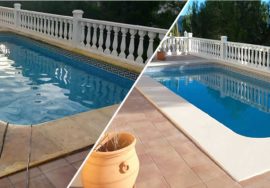
Make sure you’re safe in the Spanish sun
When the sun is strong it is sensible to regularly move into the shade and to protect your skin from the damaging rays.
If you do not protect your skin, the sun can harm your skin over time. Sunlight is a natural source of ultraviolet (UV) rays. Exposure to UV rays can come from natural sunlight or man-made sources such as tanning beds or tanning lamps.
The sun can do much more damage than simply give you a painful sunburn. Dermatologists (skin doctors) say that prolonged exposure to sunlight causes:
• Wrinkled skin
• Sagging skin
• Dry skin
• Colour changes on the skin
• Skin cancer
The main risk for developing skin cancer is too much sun exposure on unprotected skin. UV rays that damage skin the most are UVA and UVB rays, which cause tanning and burning of the skin.
Things to Remember about Sun Exposure
• The sunlight coming through your car window can damage your skin.
• You can sunburn on a cloudy day. The sun’s rays can pass through clouds on an overcast day.
• Snow, ice, sand, water and concrete around pools can reflect the sun’s rays and increase your chance of sunburn.
• Everyone is at risk for skin damage and should protect their skin. People of all skin colours can get skin cancer.
But how do you avoid the sun?
That’s tricky. Sometimes, your day at the beach may turn out to be much more sunburned than sand-filled. If your skin doesn’t produce the protective melanin pigment well or if you’re exposed to the sun before enough pigment can be manufactured and dispersed, the ultraviolet rays kill skin cells.
Even a mild sunburn that produces only a little redness destroys the top layer of your skin, just as if you had seared it with a hot iron.
Dermatologists recommend wearing sunscreen with a sun protection factor (SPF) of at least 15. Be sure to spread it on thick enough: Applying only a thin coating of a sunscreen can reduce the effectiveness of the product by as much as 50 percent. Waterproof sunscreen is best if you’ll be swimming.
A good solution is staying under cover but still being outside as long as the cover filters out the harmful UV rays, so if you have a sunblind or awning make sure the fabric provides 100% shade so you are better protected.
By Tony Bowers








